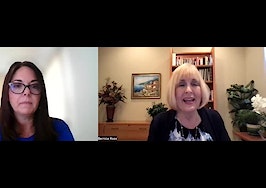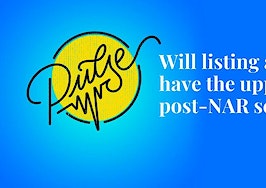 Readers who prioritize second homes and investment properties turn to Inman’s weekly Property Portfolio email newsletter, whether they’re agents who work with this special class of clients or investors themselves. This month, we’ll go deeper on everything from the latest at Airbnb and Vrbo to the changes investors are making to their portfolios in a shifting real estate market.
Readers who prioritize second homes and investment properties turn to Inman’s weekly Property Portfolio email newsletter, whether they’re agents who work with this special class of clients or investors themselves. This month, we’ll go deeper on everything from the latest at Airbnb and Vrbo to the changes investors are making to their portfolios in a shifting real estate market.
Whether the amount you can invest is $10 or a million dollars or more, it’s important to understand the fundamentals of real estate investing, how to get started and, most importantly, how to select investments that will yield the maximum return.
Brian Davis and Denise Supplee are the founders of SparkRental.com. Their site is a tremendous resource for both new and experienced investors, especially since Davis has posted over 400 articles on real estate investing.
SparkRental also provides a host of useful landlord tools including calculators that allow you to better predict your cash flow, rent prorations, Internal Rate of Return (IRR), depreciation, and loan amortization. My two favorites, however, are their “house hacking calculator” and their “FIRE” calculator (Financial Independence and Early Retirement). They also offer property management software, all at no charge.
I recently interviewed Davis about what new investors need to know as they begin their investment journey. Here are seven fundamentals to consider before deciding what types of real estate investments you want to make.
Predicting cash flow: The 50 percent rule
Davis explains that when he first started investing, one of the biggest mistakes that both he and many other novice investors make is not calculating cash flow correctly. They incorrectly assume that cash flow is the rents minus the mortgage payments. Overestimating the amount of cash flow leads to buying bad investments, often with a large negative cash flow.
Davis says there’s a simple rule to follow called the 50 percent rule that is a pretty accurate predictor of whether a property will have a positive or negative cash flow. This is based upon the fact that your non-mortgage expenses generally come to about 50 percent of the rent. This includes your property taxes, property insurance, repairs, maintenance, vacancy rate and management fees.
The correct calculation is that the cash flow is the rental income, minus 50 percent for non-mortgage expenses PLUS the mortgage payment. To get the most accurate picture of your cash flow, use a cash flow calculator.
Leverage magnifies your returns, whether they’re positive or negative
Leverage is one of the greatest advantages and potential disadvantages when it comes to real estate investing. Everyone is familiar with putting 20 percent down to buy a home. In that case, the buyer is leveraging 80 percent of the purchase price by using the bank’s money.
There’s an old adage in real estate investment that your profitability on a given property is determined by how much you pay to acquire it. If you make a good deal and you leveraged the bank’s money to do it, chances are you’ll have a great rate return on the money you put down.
To illustrate this point, if you buy a $500,000 property with $100,000 down and it increases in value by 10 percent ($50,000) during the first year, your rate of return using leverage is 50 percent ($50,000/$100,000 =50 percent) vs. only 10 percent if you paid all cash for the property.
On the other hand, if you buy a bad deal, you’re going to end up with terrible returns because you will be paying all those expenses every month to cover both your mortage payment and your negative cash flow. The result is that you will have a major “liability” rather than an “asset.”
House hacking: A great leverage play
Let’s say you purchase a triplex using a three percent down FHA loan. You leveraged your purchase by using only three percent down from your funds and using 97 percent of the bank’s money. You also have additional leverage in that your two tenants are paying you rent, plus about 2/3 of the utilities on the property.
In contrast, a single-family residence would have you bearing all those out-of-your-pocket costs as opposed to only one-third of them.
Rents increase with inflation and flatline in down markets. They almost never go down
Davis explains:
While home prices dip with recessions, rents do not. The worst-case scenario is that they flatline for a year or two. If you look at the Great Recession, home prices dropped 25 percent to 30 percent, but nationwide, rents just flatlined. While no investment is recession-proof, rents are a really resilient investment, because rents don’t drop.
Part of the reason is that during a recession, some buyers become renters. So, the demand for rentals actually increases during recession. Another reason rental properties make a good investment is that you can predict the cash flow moving forward.
Your monthly cash flow calculation should include money for major expenses
Anyone who has ever owned a condominium knows that the HOA takes money out monthly for “reserves.” This allows the HOA to cover big expenses when they occur. When you’re investing, you need do the same thing.
Davis says you should typically allow about 10 percent to 15 percent of your rents for maintenance, depending upon the age and condition of the property. He also says vacancy rates typically run 4 percent to 8 percent. A 4 percent vacancy rate comes out to one month of vacancy every two years. Eight percent is one month every year.
Avoid purchasing a multi-unit building with master meters
While you can certainly include utility costs in the rent, the smart move is to purchase a property that has individual meters, and have the tenants pay their own utility bills. That will really help you if you get a very cold winter or hot summer.
Once you have a handle on the fundamentals, here are several great choices to get started real estate investing, even if you don’t have that much money:
Crowd-funding: A different way to invest
Davis believes that if you’re first getting started in real estate investing, you may want to try out crowd-funding.
Crowdfunding is the easiest place to begin and you can start with the smallest amount of money. (The second level would be) a mid-level syndication investment. The highest level of difficulty is going out and buying rental properties or flipping properties yourself.
Davis’s favorite crowd-funding company is Groudfloor. What makes Groundfloor different is:
You are not buying shares in properties. Instead, you’re funding loans secured by properties. So, you can invest $10.00 in individual loans. These are short-term purchase rehab loans for investors. They are one of the few short term real estate investments that you can make, since real estate is typically a long investment that is illiquid.
These loans are typically three to 12 months. They allow people to renovate a fixer-upper, refinance or sell, and then you get paid back. Their returns typically range from 7 percent to 15 percent, depending upon the risk grade. Since you’re investing in a pooled loan, you can withdraw your money at any time.
This is a much better return compared to anything you would be getting from your bank.
Davis also likes Fundrise. Fundrise has a $7 billion-plus real estate portfolio that functions like most REITs (Real Estate Investment Trusts). Like Groundfloor, they also offer private lending.
The B-R-R-R-R model
“BRRRR” is an acronym for “Buy, Renovate, Rent, Refinance, Repeat.” For example, you buy a triplex that is a fixer-upper, you renovate it, then rent it out to new tenants. The updated units allow you to raise the rent, which in turn, increases the value of the property. In the meantime, the property will be increasing in value over time, usually keeping pace with inflation if not exceeding it.
Once you complete your renovations, you refinance the property using a long-term mortgage. You deduct the original down payment that you used to purchase the property, and re-use that money again to add another property to your portfolio.
The idea is to keep recycling the money and as Davis says, “earn infinite returns on your investment.” In other words, by pulling out your original investment when you refinance, you have invested zero, you usually have a positive cash flow, and you still own the property.
Syndication
When it comes to real estate investing, most experts agree that, “The more doors, the better.” For example, if you pay $300,000 all cash for a property, you only have “one door” under management.
In contrast, you could use that $300,000 to buy into one or more syndications where you might be part of an LLC that has 100 or more doors under management.
Davis and Supplee have been running an investment group where they bring different types of syndication deals to their group. Members can decide which deals they want to invest in. Their goal is to obtain a 15 percent to 30 percent return. Davis says their actual cash flow is in the 4 percent to 8 percent range while you own the property. It’s when the property sells that you get your big payout.
There are two ways investors can partner in a syndication deal. The first type is you’re acting only as a lender, but you still have an ownership interest in the property that entitles you to a certain percentage of the returns.
You write a check and you’re done. You get to sit back and collect distributions, your portion of the rental income, and you get to enjoy the appreciation. As a passive investor, you still have an ownership interest in the property.
Davis likes this type of investment approach because when you are the owner of the property, you get sued by tenants all the time. In contrast, if you are a passive investor in an LLC, you have no liability and cannot be sued.
Davis’s final piece of advice, especially for beginners, is to start with Groundfloor or Fundrise where you can start investing with as little as $10.00. When you’re ready to go to the next level, check out syndications. It takes a higher minimum investment, and it can sometimes be hard to network with those who are putting the deals together.
If you really love real estate, go out and learn what it takes to buy rental properties directly. House hacking is a great place to start. As Davis observes, “I haven’t paid a full normal rent since 2010!”
Bernice Ross, president and CEO of BrokerageUP and RealEstateCoach.com, is a national speaker, author and trainer with more than 1,000 published articles. Learn about her broker/manager training programs designed for women, by women, at BrokerageUp.com and her new agent sales training at RealEstateCoach.com/newagent.













